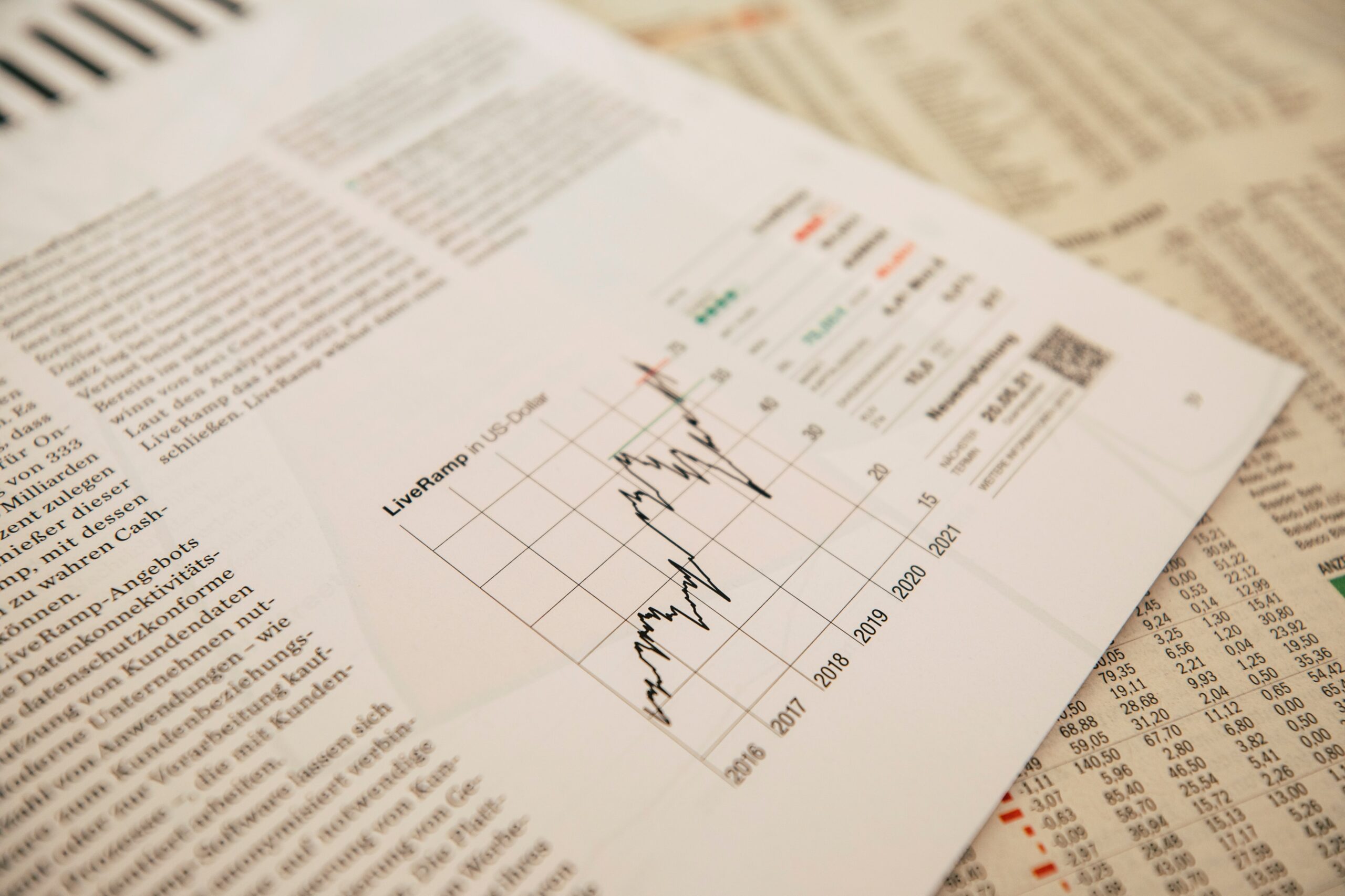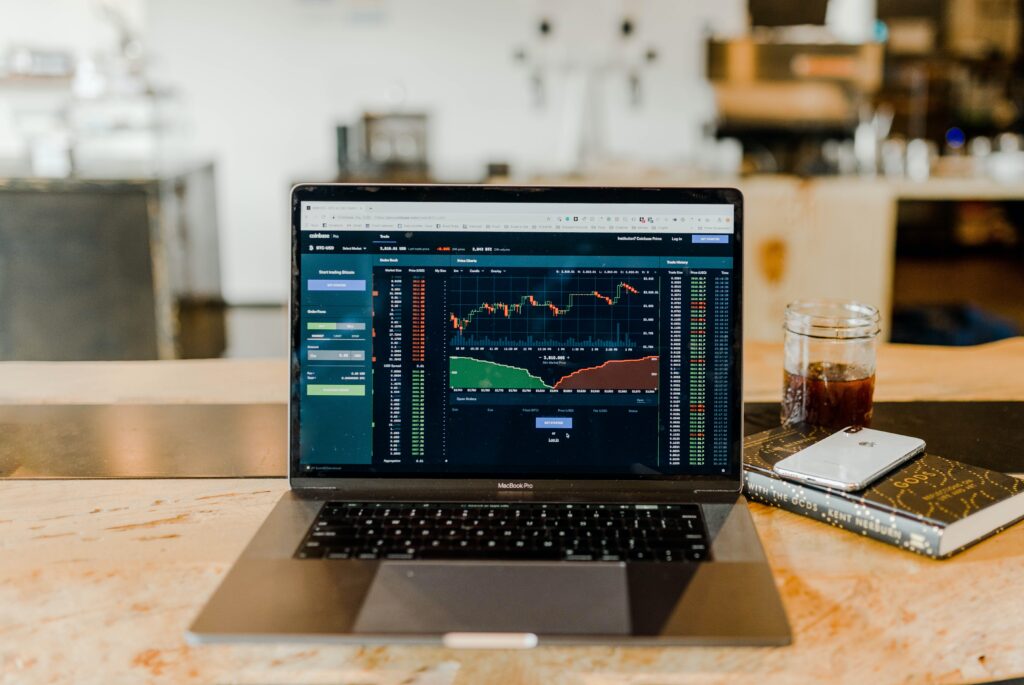
The world of investing can be a confusing and overwhelming place, especially for those who are just starting out. With so many different options and strategies available, it’s difficult to know where to begin.
One popular option for investing is exchange-traded funds, or ETFs. ETFs are a type of investment fund that trade on stock exchanges, just like regular stocks. They allow investors to get exposure to a wide range of assets, including stocks, bonds, and commodities.
In this article, we’ll give you a brief introduction to ETFs and explain how they can be used to build a diversified portfolio.
Table of Contents
What is an ETF?
An ETF (Exchange Traded Fund) is an investment fund that trades on a stock exchange, like an individual stock. ETFs are composed of a range of assets, such as stocks, bonds and commodities, and often track an index such as the S&P 500.
ETFs are typically passively-managed funds, which means they seek to track the performance of a specific benchmark and are not actively managed. This means the fund manager does not make any decisions about which investments to buy or sell.
ETFs have some advantages over other types of investments. For example, ETFs are typically more affordable than mutual funds, since their fees are lower. They also offer diversification, since they often track broader indices such as the S&P 500. Finally, they are liquid, which means they can easily be bought and sold on a stock exchange.
Some examples of ETFs are STI, VOO, SPY, QQQ.

The benefits of ETFs
ETFs are popular because of the many benefits they offer investors. One of the biggest benefits of investing in ETFs is cost savings. ETFs are much cheaper than traditional mutual funds, in part because they are passively managed. Investors don’t need to pay a fund manager to make decisions about which investments to make, which saves them a lot of money over time.
Another benefit of ETFs is diversification. ETFs include assets such as stocks, bonds and commodities, in one package. This means investors can diversify their portfolios without incurring the cost of purchasing each asset separately. ETFs are also highly liquid. This means that they can easily be bought and sold on the stock exchange, allowing investors to quickly respond to changing market conditions.
Finally, ETFs offer investors the opportunity to access global markets that may otherwise be inaccessible. ETFs are traded on international stock exchanges and can make it easier for investors to diversify their portfolios into international markets.
How to start investing in ETFs
So you’ve decided you want to start investing in ETFs, but where do you begin? Before investing, make sure you understand your risk tolerance and the goals you have for your investments. Once you know your objectives, the next step is to decide which ETFs to invest in.
A good starting point is to look at the ETFs available on your local stock exchange. If you want to diversify your portfolio further and access international markets, you can also look for ETFs listed on international stock exchanges.
When choosing an ETF, consider the fees associated with it. Generally, ETF fees are lower than fees for other types of investments. Also evaluate its performance. Past performance of ETFs can be viewed on websites such as Morningstar or Bloomberg.
Do your research before investing in any ETF. Take the time to understand the type of investment you are making and the portfolio of assets that the ETF holds. Remember, ETFs that offer higher returns usually come with higher risks. Be sure to invest in ETFs that fit your personal risk tolerance.

The dangers of ETFs
When it comes to ETF investing, it’s important to be aware of potential risks. While ETFs offer an easy and low-cost way to invest and diversify, like with any type of investment, there are some potential dangers.
One danger with ETFs is market volatility. Just like stocks, ETFs can experience periods of market ups and downs. Thus, investing in ETFs can be risky and could result in losses if you’re not careful.
Another potential danger is that ETFs are not as transparent as traditional investments. ETFs generally disclose their holdings on a periodic basis, which means that the state of the portfolio within an ETF can change quickly. Therefore, it’s important to closely monitor the holdings of an ETF before investing.
It’s also important to ensure that ETFs are a good fit for your own investment objectives and risk tolerance. As a general indicator, investors should investigate if an ETF has seen positive performance over at least a 5-year timespan.
FAQ
How do I choose an ETF to invest in?
When choosing an ETF to invest in, it’s important to consider factors such as the underlying assets, the fund’s expense ratio, and its historical performance. You should also consider your investment goals and risk tolerance.
Can I trade ETFs like individual stocks?
Yes, you can buy and sell ETFs on a stock exchange throughout the trading day, just like you would individual stocks. However, it’s important to remember that ETFs are designed to be long-term investments, so frequent trading may not be the best strategy.
Are ETFs tax-efficient?
ETFs are generally more tax-efficient than mutual funds because of the way they are structured. ETFs can avoid capital gains distributions by using in-kind transactions to exchange shares of the underlying assets, rather than selling the assets themselves.
Can I use ETFs in my retirement portfolio?
Yes, ETFs can be a good option for retirement portfolios. They offer diversification and low fees, and some ETFs are designed specifically for retirement investors.
How do I know if an ETF is right for me?
ETFs can be a good option for many investors, but it’s important to consider your individual investment goals, risk tolerance, and overall financial situation. You should also consult with a financial advisor if you’re unsure whether ETFs are right for you.
Include ETF in your Investment Strategy
Before investing in ETFs, it is important to invest some time into researching the best option for you. Consider the risk profile of ETFs and make sure they are in line with your own investment objectives and risk tolerance. Additionally, be aware of potential issues associated with ETFs, such as market volatility and insufficient transparency, and further research how the ETFs you’re considering investing in perform in a range of market conditions.
ETFs can offer a unique opportunity to invest in the stock market. When used wisely, they can be a great option to diversify your portfolio and help to reduce your risk. However, it’s important to do your due diligence, monitor your investments, and make informed decisions about ETF investing. With the right approach and a bit of research, you can make the most of ETFs as a great addition to your long-term investment strategy.
If you’re new to investing in Singapore, be sure to read my guide to investing for beginners.



Comments (7)
6 Best Investment Options for Risk-Averse Singaporeanssays:
May 3, 2023 at 6:51 am[…] Read more: Why ETFs Should Be Part Of Your Investment Strategy […]
Unlocking the Power of Compound Interest in Singapore |Guidesays:
August 13, 2023 at 6:59 am[…] Find out more on Why ETFs should be part of your investment strategy. […]
How to Cut Your Losses in Investments: My $7,000 Mistakesays:
August 13, 2023 at 7:01 am[…] One key strategy to limit your losses is to diversify your portfolio. By spreading your investments across different sectors and industries, you can reduce the impact of any one company or industry on your portfolio. This can help cushion the blow if one of your investments experiences a significant decline in value. An easy way to diversify your portfolio is to invest directly into exchange-traded funds (ETFS). […]
CSPX vs. VOO - Which to Choose for Your ETF Investment?says:
September 10, 2023 at 9:39 am[…] part of your investment strategy, you’ll find valuable insights in my article titled “Unlocking the Power of ETFs in Your Portfolio.” It discusses the numerous benefits that ETFs bring to the table, shedding light on why […]
5 Reasons Why I Am Not Topping Up My CPF Special Account(SA)says:
November 1, 2023 at 8:19 am[…] and risk management in an investment strategy. For example, in this article on my blog, “Why ETFs Should Be Part of Your Investment Strategy,” I delve deeper into the benefits of including ETFs in one’s investment […]
Should You Surrender Your Whole Life Insurance Policy?says:
February 3, 2024 at 5:11 am[…] can be redirected into other investments such as investing in ETFs or used for urgent expenses, offering a flexible solution during financial […]
Gold ETFs Vs. Physical Gold: A Guide For Investorssays:
May 28, 2024 at 1:48 am[…] If you’re curious about why ETFs are gaining popularity, you can read more about the benefits of ETF. […]